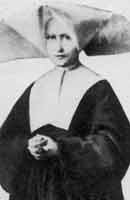
Bio: Zoe Laboure was born at Fain-lès-Moutiers, Burgundy, France to the farmer Pierre Labouré and Louise Laboure as the ninth of eleven children on May 2, 1806. From an early age felt a call to the religious life. When Catherine was nine years old, her saintly mother died on October 9, 1815. After the burial service, little Catherine retired to her room, stood on a chair, took our Lady’s statue from the wall, kissed it, and said: “Now, dear Lady, you are to be my mother.” On January 25, 1818, Catherine made her First Communion. One day she had a dream in which a priest said to her: “My daughter, you may flee me now, but one day you will to come to me. Do not forget that God has plans for you.” Sometime later, while visiting a hospital of the Daughters of Charity at Chatillon-sur-Seine, she noticed a priest’s picture on the wall. She asked a sister who he might be, and was told: “Our Holy Founder Saint.” This was the same priest Catherine had seen in the dream. Catherine knew she was in the right place.
Later, on January 1830, Catherine began her postulancy at Chatillon. On Wednesday, April 21, 1830, Catherine Labouré entered the novitiate of the Daughters of Charity, located at their motherhouse, Rue du Bac 140, Paris. taking the name Catherine. On the eve of the Feast of Saint Vincent de Paul, July 19, the Sister Superior spoke to the novices about the virtues of their Holy Founder and gave each of the novices a piece of cloth from the holy founder’s surplice. Because of her extreme love, Catherine split her piece down the middle, swallowing half and placing the rest in her prayer book. She earnestly prayed to Saint Vincent that she might, with her own eyes, see the Mother of God.
Body of Catherine Laboure

Catherine Laboure died on 31st December 1876. When her body was exhumed, after fifty-seven years of burial, it was found to be completely incorrupt and supple. Her eyes were as blue as the day she died. On 28th May, 1933 she was beatified by Pope Pius XI. This occasion was witnessed by 50,000 people, of which there were 8,000 children of Mary, veiled in white, all wearing the Miraculous Medal. On 27th July, 1947 Catherine Laboure was canonized by Pope Pius XII. Here again many believers were present, including more than 10,000 children of Mary, veiled in white.
Many healings, including those of people for whom there was totally no hope, were attributed to the “Miraculous Medal”. Just in the American city of Philadelphia alone, between 1930 and 1950, more than 750.000 favours were granted and registered. Catherine Laboure is still lying in state at the right of the altar in the chapel Rue du Bac 140, in Paris and she still looks as though she only died yesterday!
Patroness of architects, miners, and prisoners. “These apparitions of Mary and the Miraculous Medal by Catherine Laboure are fully approved by th e Holy See: 1836”
1st apparition of the Blessed Virgin
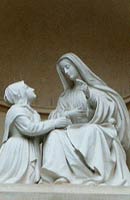
19th July, 1830 Chapel Rue du Bac 140, Paris: It is 11.30 pm; Sister Catherine Laboure (24 years old) wakes up as she hears her name called three times. She opens the curtains of her cell and sees her Guardian Angel in de form of a 5 year old child. He says: “follow me to the chapel, where the Virgin Mary awaits you”. Catherine Laboure hastily dresses herself and follows him to the chapel. The chapel is lit as for midnight-Mass, but she can’t see the Blessed Virgin. She then kneels and prays. After half an hour her guardian angel says: “there is the Blessed Virgin Mary”. Catherine Laboure hears a rustle like that of silk and to the left of St. Joseph she sees the Blessed Virgin Mary descend and sit herself on the chair of the Priest. Within a moment she is on her knees in front of the Blessed Virgin, with her hands confidently folded on Mary’s knees. This is the beginning of a two hour long conversation. The Blessed Virgin Mary tells her that God will charge her with a mission. In the process she will experience many difficulties. The Blessed Virgin already speaks of bad times ahead. The whole world will be plunged into confusion through all sorts of incidents. The Cross will be treated with contempt; it will be cast to earth. The side of our Lord will be pierced again. The Blessed Virgin says this with a very sorrowful look on her face. Encouragingly though, She adds: “but come to the foot of this altar and here graces will be bestowed upon all, who ask with confidence and fervour. they will be given to the rich and to the poor”
2nd apparition of the Blessed Virgin
27th November, 1830 Chapel Rue du Bac 140, Paris: It is 5.30pm, and the Sisters are in the chapel for the hour of Meditation. Suddenly Catherine Laboure hears, to her right, the same rustle as before; it is the Blessed Virgin Mary. She stops to the left near the painting of St. Joseph. This whole apparition is conducted in scenes and sign-language. The Blessed Virgin “standing in space”. She was dressed in white, standing on a globe and holding a golden ball, with rings on her fingers flashing with light. An inner voice told her that the ball represented the whole world and that the rays coming from Mary’s fingers represented graces for individuals. Then, a second phase: The golden ball then vanished as this apparition changed to represent Mary with her arms outstretched, inside an oval frame with golden lettering:
Mary gave her this instruction:
“have a medal struck on this model. All those who carry this will receive Grace in abundance, especially if they wear the medal around their neck and say this prayer confidently, they will receive special protection from the Mother of God and abundant graces”.
Then it is although the whole scene turns around and Catherine Laboure can see the back of the medal: in the centre is the letter M, from where a Cross ascends with at its base a cross-beam which passes through the letter M and below this the two hearts of Jesus and Mary, one crowned with thorns the other pierced by the sword of sorrow. The whole is surrounded with a crown of 12 stars recalling the vision of St. John in the twelfth chapter of the Apocalypse or Book of Revelations. Catherine Laboure hears: “the M with the Cross and the two hearts say enough”.
During the next year this apparition occurred five times and each time with the same instructions:
“have a medal struck on this model, and all those who wear it will receive great graces, especially when worn around the neck”.
Sister Catherine endured many humiliations, but she persevered. It took two years before her confessor, Father Aladel, a Vicentian priest, had the medal struck. The original name of the medal is that of holy Mary’s Immaculate Conception; only after 7 years was the name changed to the “Miraculous Medal”. Because of the many answered prayers, the conversions and the cures, some 10 million medals were sold during the first 5 years.
The short prayer:
“O Mary conceived without sin, pray for us who have recourse to Thee”
has since been prayed innumerable times by believers, so that the entire Christianity became familiar with Mary’s “Immaculate Conception”. It was Pope Pius IX who made it a rule of faith. This was received with great joy by the entire Church. Four years later, Mary came as though to confirm this, when She said to Bernadette at Lourdes:
Explanation of the Miraculous Medal:
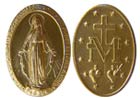
On the one side, Mary is standing upon a globe, crushing the head of a serpent beneath her foot. She stands upon the globe, as the Queen of Heaven and Earth. Her feet crush the serpent to proclaim Satan and all his followers are helpless before her (Gn 3:15). The year of 1830 on the Miraculous Medal is the year the Blessed Mother gave the design of the Miraculous Medal to Saint Catherine Labouré. The reference to Mary conceived without sin supports the dogma of the Immaculate Conception of Mary—not to be confused with the virgin birth of Jesus, and referring to Mary’s sinlessness, “full of grace” and “blessed among women” (Luke 1:28)—that was proclaimed 24 years later in 1854.
On the reverse side of the medal there are twelve stars that encircle a large “M” from which arises a cross. Below are two hearts with flames arising from them. One heart is encircled in thorns and the other is pierced by a sword. The twelve stars can refer to the Apostles, who represent the entire Church as it surrounds Mary. They also recall the vision of Saint John, writer of the Book of Revelation (12:1), in which “a great sign appeared in heaven, a woman clothed with the sun, and the moon under her feet, and on her head a crown of 12 stars.” The cross can symbolize Christ and our redemption, with the bar under the cross a sign of the earth. The “M” stands for Mary, and the interleaving of her initial and the cross shows Mary’s close involvement with Jesus and our world. In this we see Mary’s part in our salvation and her role as mother of the Church. The two hearts represent the love of Jesus and Mary for us.
I am the Immaculate Conception
How the miraculous medal came to be: St. Catherine Laboure, A sister in France in 1830, was given the grace to have Mary visit with her 3 times. The second time, St. Catherine saw her standing on a globe with rays of light streaming from her hands. Around Mary were the words: “O Mary conceived without sin, pray for us who have recourse to Thee.” Mary told St. Catherine to have a medal made that looked exactly like that. St. Catherine did what Mary told her. The medals were called the Medal of the Immaculate Conception. As soon as people started wearing the medals, miracles were happening. People started calling them the Miraculous Medal.
The Conversion of the Jew Alphonse Ratisbonne by the Miraculous Medal:
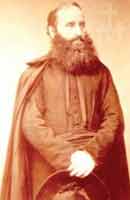
Marie Alphonse Ratisbonne was born at Strasburg France, on 1 May, 1814. He was the son and heir of a wealthy, aristocratic family of Jewish bankers. When Alphonse Ratisbonne was still a child his older brother, Theodor, converted to the Catholic faith and became a priest. The family Ratisbonne reacted with hostility and horror. Alphonse resolved never to communicate again with his older brother, and developed a violent antipathy to the Catholic faith and to all things Catholic. In 1842, 28 years old, he is engaged to his own niece, Flore Ratisbonne, whom he plans to marry the following August. Right now, he is touring Europe and the East, partly for pleasure and partly for his health; one last fling before settling down with Flore and assuming a partnership at his uncle’s bank. Ratisbonne decided to go to Naples, to spend the winter in Malta, to strengthen his delicate health.
In Naples he had mistaken the road and instead of coming to the reservation office for Palermo, as he intended, he arrived at the stage-coach for Rome. Even after he realized what was up; he remained there and booked his passage on the steamer to Rome. He left Naples on the 5th and arrived in Rome on the 6th, the feast of the Three Kings. So here he is, making the best of it, avidly touring Roman ruins and museums in the company of a paid guide. On January 8, Ratisbonne was called by name on the street. It was his old classmate from Strasburg, Gustavo de Bussières, a Protestant. The two eagerly rekindle their friendship. Later, when Alphonse calls on Gustave, he encounters the latter’s older brother, the Baron Theodore de Bussières, a convert to Catholicism and a close friend of Alphonse’s priest-brother. Alphonse feels instinctive abhorrence toward this zealous Catholic convert, but he knows the baron is an expert on Constantinople, which Alphonse plans to visit, so he rashly agrees to call upon him for travel advice. De Bussières saw it as his mission to convert any unbeliever who crossed his path in life, to Catholicism. He and Ratisbonne became friends, but Ratisbonne’s sarcasm and blasphemy irritated him enormously.
Finally, the baron makes an extraordinary proposition. “Since you abhor superstition and espouse such liberal views,” he asks Alphonse, “would you consider submitting to a simple test?” “What test?” “To wear something I’m going to give you. It’s a medal of the Holy Virgin. It appears quite ridiculous to you, no doubt. But as for me, I attach great importance to it.” And he shows Alphonse the Miraculous Medal attached to a cord. Alphonse is dumbstruck. He can scarcely believe the baron’s impertinence. But as a man of the world, he doesn’t want to seem to be making too much of a trifle. So he consents, breezily quoting a line from The Tales of Hoffman: “If it does me no good, at least it will do me no harm.” The baron’s little daughter puts the miraculous medal around Alphonse’s neck. And Alphonse burst out laughing: “Here am I, a Roman, apostolic Catholic!” But this was not enough for De Bussières. “And now”, he said, “you must complete the test. Every morning and evening recite the Memorare, a short and efficious prayer, which St. Bernard composed to the Virgin Mary”. Ratisbonne said: “Let it be! I promise to recite this prayer. If it will not do me any good, it will not do me any bad!”
In fact, the baron’s relentless proselytism is starting to get on Alphonse’s nerves. Far from drawing him toward Catholicism, it is repelling him further. Yet the baron, undaunted, persists. But the baron is not relying on argument alone. He’s also praying very hard. And so are his friends, his fellow members of Rome’s tight-knit community of aristocratic French expatriates. Notable among these friends is the Count Laferronays, ex-diplomat, once a notorious roue’ and now a devout, fervent Catholic. Moved by the baron’s pleas, the Comte drops into a church and fervently prays “more than 20 Memorares” for the conversion of the “young Jew.” That very same evening, the Count suffers a fatal heart attack. After receiving his final Sacraments, he dies devoutly, surrounded by his loving family.
At midday, January 20, 1842, when the Baron was arranging the funeral of his friend Count Laferronays in the basilica of St. Andrea delle Fratte in Rome he asked Ratisbonne to wait for him in the church. When the Baron came back to the church he found Ratisbonne on his knees in prayer. This sight moved him to tears. In Ratisbonne’s own words: “I was scarcely in the church when a total confusion came over me. When I looked up, it seemed to me that the entire church had been swallowed up in shadow, except one chapel. It was as though all the light was concentrated in that single place. I looked over towards this chapel whence so much light shone, and above the altar was a living figure, tall, majestic, beautiful and full of mercy. It was the most holy Virgin Mary, resembling her figure on the Miraculous Medal. At this sight I fell on my knees right where I stood. Unable to look up because of the blinding light, I fixed my glance on her hands, and in them I could read the expression of mercy and pardon. In the presence of the Most Blessed Virgin, even though she did not speak a word to me, I understood the frightful situation I was in, my sins and the beauty of the Catholic Faith.
The baron helps Ratisbonne outside and into his carriage. He takes him to the Hotel Serny, where Alphonse is staying, and loosens his cravat so he can breathe. But Alphonse is still sobbing, clasping his Miraculous Medal, murmuring thanks to God. At last he turns to the baron, embraces him, and with a face “presque transfiguree” says: “Take me to a confessor! When can I receive baptism, without which I can no longer live?” “What has happened?” exclaims the baron. “What have you seen?” “That,” says Alphonse, “I can reveal only on my knees and to a priest.” So…the baron takes him to the Gesu, the Jesuit mother-church, to see Father Villefort. There, Alphonse tries to explain himself, but he is still sobbing so hard that he is unintelligible. At last he calms down, takes the Miraculous Medal from his neck, holds it up, and cries: “I saw Her! I saw Her!”
Alphonse Ratisbonne confessed and thought that his family would believe he was insane and would have ridiculed him. So he prefered to flee totally from the world, its chatter and its judgments. He entered the convent of the Jesuits to make a retreat under the guide of Father Villefort. January 31, 1842, he received from the hands of His Eminence Cardinal Patrizi, the Vicar of His Holiness, baptism, confirmation and his first Holy Communion. The following month, the Vatican holds a canonical process to investigate the circumstances surrounding Alphonse’s conversion. After lengthy investigation and many depositions, it concludes that his sudden conversion was entirely miraculous; an act of God wrought through the powerful intercession of the Virgin. In May 1842, only a few months after the apparition, a painting of the Madonna of the Miracle was placed for veneration in exactly the same spot and in the same form as She appeared. The canvas was painted by the artist Natale Carta, who according to tradition, followed the indications of Ratisbonne himself. In the same year, after a formal inquest about the apparition of January 20, the Vicar General of Pope Gregory XVI, Cardinal Patrizi, declared on June 3, 1842, that it was a divine miracle operated through the intercession of the Blessed Virgin Mary, and permitted the publication and spread of texts recording the miracle.
After his conversion he assisted his brother, Theodor, in founding the Sisterhood of Our Lady of Sion in 1843, was ordained priest in 1847, and entered the Society of Jesus. Desirous, however, to devote himself entirely to the conversion of the Jews, he left the society with the consent of Pope Pius IX, transplanted the Sisters of Sion to Jerusalem in 1855, and built for them in 1856 the large Convent of Ecce Homo with a school and an orphanage for girls. In 1860 he erected the Convent of St. John on the mountain at Ain Karim, together with a church and another orphanage for girls. Here Alphonse laboured with a few companions (Pères de Sion) for the conversion of Jews and Mohammedans until his death. He died there May 6, 1884. Ratisbonne did try to get in contact with Catherine Labouré, but never succeeded, as the Sister was shielded from the outside world. There were so many miracles operated by Mary in the Shrine, that on January 17, 1892, Pope Leo XIII coronated the venerated icon with a diadem. On April 25, 1942, Pope Pius XII elevated the title of the church to the rank of a basilica. On March 12, 1960, Pope John XXIII elevated the basilica of Sant Andrea delle Fratte to the title of a cardinal’s church. The visit of Pope John Paul II to this church took place on February 28, 1982. This apparition to Alphonse Ratisbonne in Rome is fully approved by the Holy See: June 3, 1842″
Daily Miraculous Medal Prayer of St. Maximilian Kolbe:
O Mary, conceived without sin, pray for us who have recourse to you, and for all who do not have recourse to you, especially the enemies of the Church and those recommended to you.
Novena to Our Lady of the Miraculous Medal
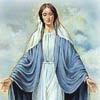
Come, Holy Spirit, fill the hearts of Your faithful, and kindle in them the fire of Your love. Send forth Your Spirit, and they shall be created; and You shall renew the face of the earth. O God, You instructed the hearts of the faithful by the light of the Holy Spirit. Grant us in the same Spirit to be truly wise and ever to rejoice in His consolation, through Jesus Christ out Lord. Amen.
O Mary, conceived without sin, pray for us who have recourse to thee. (3 times)
Lord, Jesus Christ, You have been pleased to glorify by numberless miracles the Blessed Virgin Mary, immaculate from the first moment of her conception. Grant that all who devoutly implore her protection on earth may eternally enjoy Your presence in heaven, Who, with the Father and the Holy Spirit live and reign, God forever and ever. Amen.
Lord Jesus Christ, for the accomplishment of your works, You have chosen the weak things of the world, that no flesh may glory in your sight. And for a better and more widely diffused belief in the Immaculate Conception of Your Mother, You have wished that the Miraculous Medal be manifested to Saint Catherine Labouré. Grant, we beseech You, that filled with like humility, we may glorify this mystery by the word and work. Amen.
Remember, O most gracious Virgin Mary, tat never was it known that anyone who fled to your protection, implored you help or sought your intercession, was left unaided. Inspired with this confidence, I fly to you, O virgin of virgins, my Mother; to you I come, before you stand, sinful and sorrowful. O Mother of the Word Incarnate, despise not my petitions, but in your mercy hear and answer me. Amen.
Immaculate Virgin Mary, mother of our Lord Jesus Christ and out Mother, penetrated with the most lively confidence in your all-powerful and never-failing intercession, manifested so often through the Miraculous Medal, we your loving and trustful children implore you to obtain for us the graces and favors we ask during this Novena, if they be beneficial to our immortal souls, and the souls for which we pray… (Mention your request).
You know, Mary, how often our souls have been the sanctuaries of your Son Who hates iniquity. Obtain for us then a deep hatred of sin and that purity of heart which will attach us to God alone so that out every thought, word and deed may tend to His greater glory. Obtain for us also a spirit of prayer and self-denial that we may recover by penance what we have lost by sin and at length attain to that blessed abode where you are the Queen of Angels and of Men. Amen.
O Mary, conceived without sin, pray for us who have recourse to thee. (3 times) Amen.
Prayer of Saint Catherine Laboure
Whenever I go to the chapel, I put myself in the presence of our good Lord, and I say to him “Lord, I am here. Tell me what You would have me do.” If He gives me some task, I am content and I thank Him. If He gives me nothing, I still thank Him since I do not deserve to receive anything more than that. And then, I tell God everything that is in my heart. I tell Him about my pains and my joys, and then I listen. If you listen, God will also speak to you, for with the good Lord, you have to both speak and listen. God always speaks to you when you approach Him plainly and simply. Amen
(Other Marian Apparitions…)
- Do repent! Do repent! Do repent! One knows that the present situation in schools worldwide is awful, because God has been chased out, because His law is no longer taught. It is even forbidden to pray to Him in schools!
- I am the Lady of Sorrows. If men do not repent and better themselves, the Father will inflict a terrible punishment on all humanity. It will be a punishment greater than the deluge, such as one will never seen before. Fire will fall from the sky and will wipe out a great part of ...
- The Warning, The Miracle, The Punishment The warning comes directly from God and will be visible to the whole world and from any place where anyone many happen to be. It will be like the revelation of our sins and it will be seen and felt by everyone, believer and unbeliever alike irrespective of ...
- I am the Lady of the Rosary. You have seen hell, where the souls of poor sinners go. It is to save them that God wants to establish in the world devotion to my Immaculate Heart
- Satan does not sleep. Dear children! God gave you the grace to live and to defend all the good that is in you and around you, and to inspire others to be better and holier; but Satan, too, does not sleep and through modernism diverts you and leads you to his way
- Virgin has told me that when the 20th century passes away, with it will pass away the Age of Science. A new Age of Faith will dawn around the world. Proof will come at last that it was Our Lord Who created the world and man
- I call upon the true disciples of the God. The demons of the air, together with the Antichrist, will work great wonders on the earth and in the air, and men will become ever more perverted
- Let not your heart be disturbed. Do not fear that sickness, nor any other sickness or anguish. Am I not here, who is your Mother? Are you not under my protection?
- That of Pontmain is one of the most mysterious and complex Marian apparitions that have ever taken place on the planet. Almost no one has discovered its relationship to the end times, the ones we are experiencing today
- Pray, pray, my son for the entire world. The world is threatened by serious dangers. A mother never forgets her children… I ask the Lord to appease His Justice, but if you don’t change, you will hasten the arrival of a Third World War

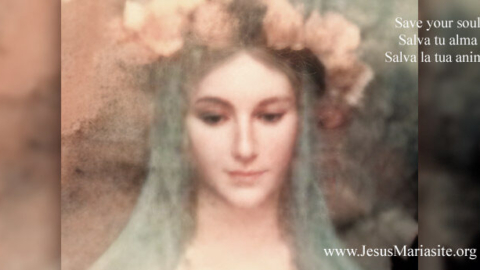








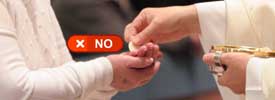









 Pray for the Church, its Hierarchies, the validly ordained and consecrated during this time of confusion and apostasy. Do not fall into the trap of division, even with apparent good reasons. Turn your eyes to the lives of saints, such as St. Martin de Porres, St. Padre Pio of Pietrelcina, the former discriminated against and the latter fought by the same institution. Let their behavior in adversity be an example for you to follow…
Pray for the Church, its Hierarchies, the validly ordained and consecrated during this time of confusion and apostasy. Do not fall into the trap of division, even with apparent good reasons. Turn your eyes to the lives of saints, such as St. Martin de Porres, St. Padre Pio of Pietrelcina, the former discriminated against and the latter fought by the same institution. Let their behavior in adversity be an example for you to follow…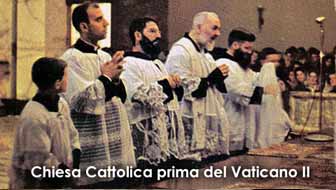
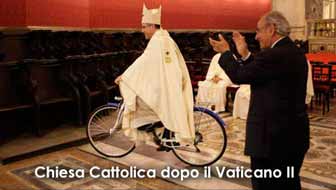
 “The Church is God’s house. It is forbidden for men to enter here with bare arms and wearing shorts. It is forbidden for women to enter wearing trousers, bare headed, with short, low-necked or sleeveless dresses.”
“The Church is God’s house. It is forbidden for men to enter here with bare arms and wearing shorts. It is forbidden for women to enter wearing trousers, bare headed, with short, low-necked or sleeveless dresses.”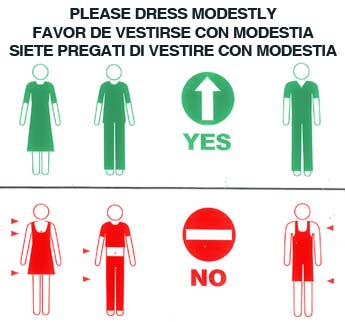
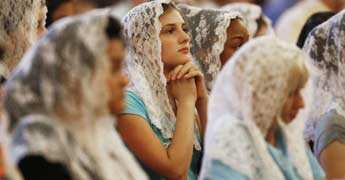
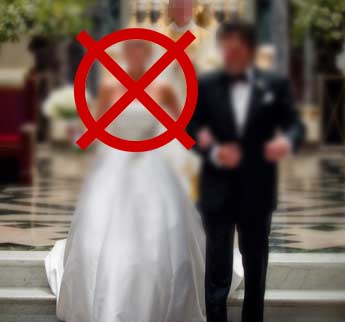
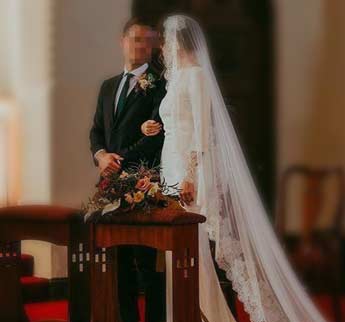
 “Parents, correct the ways if your family, have much dialogue with your children, make time to listen to them as many homes are being lost due to lack of love, dialogue, understanding and most specially for not inviting God. Take God back into your homes, pray my Holy Rosary, as the family that prays together stays together.”
“Parents, correct the ways if your family, have much dialogue with your children, make time to listen to them as many homes are being lost due to lack of love, dialogue, understanding and most specially for not inviting God. Take God back into your homes, pray my Holy Rosary, as the family that prays together stays together.” 



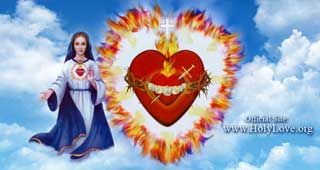
 January 31, 2022 "Heavenly Father, today, I surrender to You my heart. Help me to be Your instrument in the world. Cover me with the Precious Blood of Your Divine Son. Guard me against all evil. Protect me from any evil plan Satan may have for me today. Clothe me in Your Divine Will. Amen"
January 31, 2022 "Heavenly Father, today, I surrender to You my heart. Help me to be Your instrument in the world. Cover me with the Precious Blood of Your Divine Son. Guard me against all evil. Protect me from any evil plan Satan may have for me today. Clothe me in Your Divine Will. Amen" "O Hearts of Jesus and Mary; I consecrate myself, I consecrate my family and the whole world, to your Most Beloved Hearts. Listen to the supplication which I making to you and accept our hearts in Yours, to be delivered and protected we, the whole world, from all evil and all sin. May the protection of your Two Hearts be refuge, strength, and protection, in the daily spiritual struggles. That the power of your Two Hearts irradiates the world so that it is protected from evil and sin. We willingly consecrate ourselves and consecrate all mankind to your Hearts; sure and confident, for your Great Mercy, to obtain the victory over the forces of evil in this world, and the eternal Glory in the Kingdom of God. Amen"
"O Hearts of Jesus and Mary; I consecrate myself, I consecrate my family and the whole world, to your Most Beloved Hearts. Listen to the supplication which I making to you and accept our hearts in Yours, to be delivered and protected we, the whole world, from all evil and all sin. May the protection of your Two Hearts be refuge, strength, and protection, in the daily spiritual struggles. That the power of your Two Hearts irradiates the world so that it is protected from evil and sin. We willingly consecrate ourselves and consecrate all mankind to your Hearts; sure and confident, for your Great Mercy, to obtain the victory over the forces of evil in this world, and the eternal Glory in the Kingdom of God. Amen" "O Virgin of Carmel, may the power of your Holy Scapular take away from me the enemy of my soul; bless me, Mother of Carmel, and deliver me from all evil and danger in this world. I ask you O Mother, that in the hour of my death, your Holy Scapular frees me from the fury of the devil and in the eternity, of the eternal fire. Amen"
"O Virgin of Carmel, may the power of your Holy Scapular take away from me the enemy of my soul; bless me, Mother of Carmel, and deliver me from all evil and danger in this world. I ask you O Mother, that in the hour of my death, your Holy Scapular frees me from the fury of the devil and in the eternity, of the eternal fire. Amen" 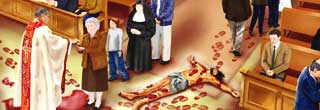
 "Oh Jesus of Divine Mercy, hear my pleadings to you, for I am here to do your Will"
"Oh Jesus of Divine Mercy, hear my pleadings to you, for I am here to do your Will" "O glorious St. Joseph! by your profound humility, by your unalterable meekness, by your invincible patience, by your angelic purity and perfect fidelity that made you a timely imitator of the virtues of Jesus and Mary, I ask you to console me in all my sorrows, to guide me in all my doubts, to defend me in all temptations, to deliver me from all spiritual and material dangers; to extend your arm against all my visible and invisible enemies, breaking and destroying all the snares and barriers that they tend and arm against me. Amen"
"O glorious St. Joseph! by your profound humility, by your unalterable meekness, by your invincible patience, by your angelic purity and perfect fidelity that made you a timely imitator of the virtues of Jesus and Mary, I ask you to console me in all my sorrows, to guide me in all my doubts, to defend me in all temptations, to deliver me from all spiritual and material dangers; to extend your arm against all my visible and invisible enemies, breaking and destroying all the snares and barriers that they tend and arm against me. Amen"  "Oh, blessed Saint Michael, protect us from the attacks and snares of the evil spirits because you know full well that we are poor mortals, fragile and weak, in need of the Mercy of God and of your protection to fulfill the mission that Heaven has commissioned to us. Oh, Saint Michael, may your victorious cry: “who is like God? no one is like God”, suppress and cast into Hell satan and all the evil spirits who prowl about the world seeking the destruction of souls. Amen"
"Oh, blessed Saint Michael, protect us from the attacks and snares of the evil spirits because you know full well that we are poor mortals, fragile and weak, in need of the Mercy of God and of your protection to fulfill the mission that Heaven has commissioned to us. Oh, Saint Michael, may your victorious cry: “who is like God? no one is like God”, suppress and cast into Hell satan and all the evil spirits who prowl about the world seeking the destruction of souls. Amen"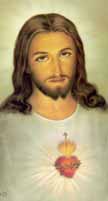 Most sweet Jesus, redeemer of the human race, look down upon us, humbly prostrate before your altar. We are yours and yours we wish to be; but to be more surely united with you, behold each one of us freely consecrates himself today to your most sacred heart. Many, indeed, have never known you, many too, despising your precepts, have rejected you. Have mercy on them all, most merciful Jesus, and draw them to your sacred heart. Be you king, O Lord, not only of the faithful who have never forsaken you, but also of the prodigal children who have abandoned you; grant that they may quickly return to their father’s house, lest they die of wretchedness and hunger. Be you king of those who are deceived by erroneous opinions, or whom discord keeps aloof, and call them back to the harbor of truth and unity of faith, so that soon there may be but one flock and one shepherd. Be you king also of all those who sit in the ancient superstition of the Gentiles, and refuse not you to deliver them out of darkness into the light and kingdom of God. Grant, O Lord, to your Church, assurance of freedom and immunity from harm; give peace and order to all nations, and make the earth resound from pole to pole with one cry: Praise to the divine heart that wrought our salvation; to it be glory and honor forever. Amen.
Most sweet Jesus, redeemer of the human race, look down upon us, humbly prostrate before your altar. We are yours and yours we wish to be; but to be more surely united with you, behold each one of us freely consecrates himself today to your most sacred heart. Many, indeed, have never known you, many too, despising your precepts, have rejected you. Have mercy on them all, most merciful Jesus, and draw them to your sacred heart. Be you king, O Lord, not only of the faithful who have never forsaken you, but also of the prodigal children who have abandoned you; grant that they may quickly return to their father’s house, lest they die of wretchedness and hunger. Be you king of those who are deceived by erroneous opinions, or whom discord keeps aloof, and call them back to the harbor of truth and unity of faith, so that soon there may be but one flock and one shepherd. Be you king also of all those who sit in the ancient superstition of the Gentiles, and refuse not you to deliver them out of darkness into the light and kingdom of God. Grant, O Lord, to your Church, assurance of freedom and immunity from harm; give peace and order to all nations, and make the earth resound from pole to pole with one cry: Praise to the divine heart that wrought our salvation; to it be glory and honor forever. Amen.